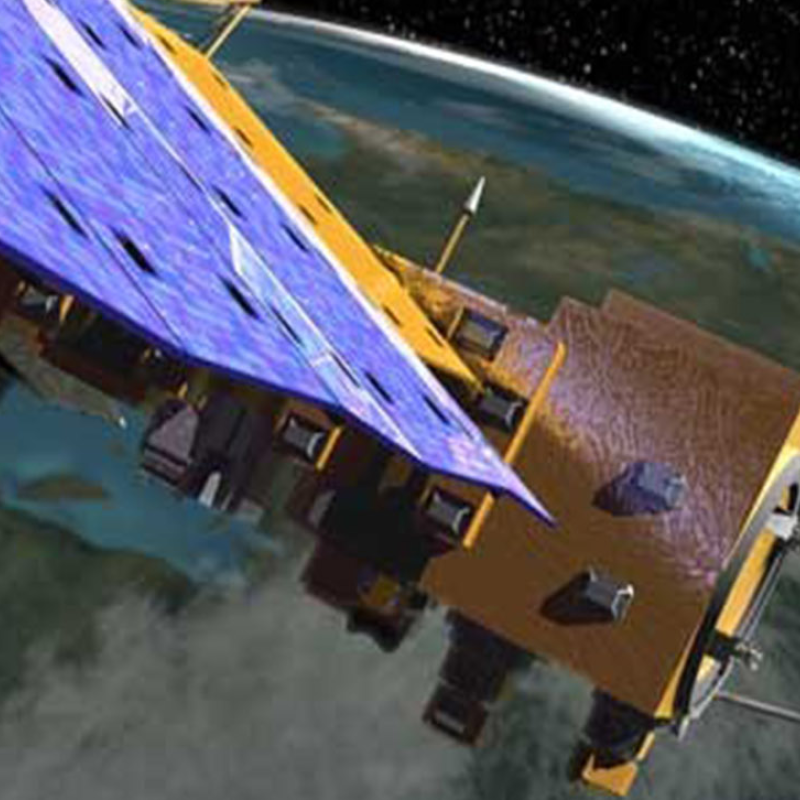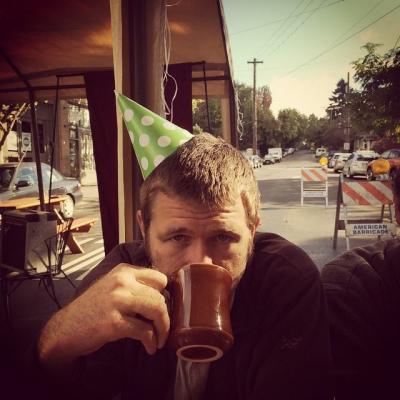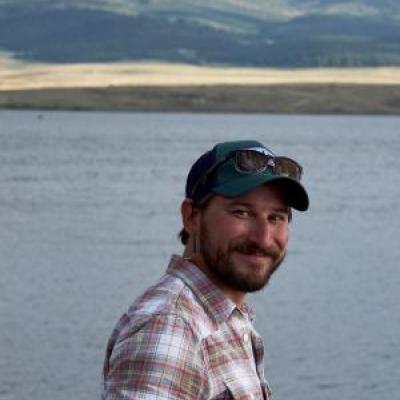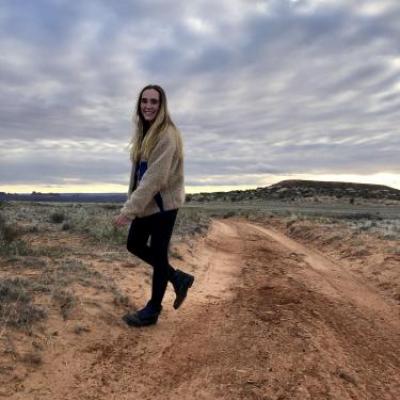Warming weakens the night-time barrier to global fire
This piece is a summary of “Warming weakens the night-time barrier to global fire”, a study led by Director Jennifer Balch, published February 2022 in Nature. Read the paper in full here.
Background
Human-caused climate change has warmed the night more than the day over the past 70 years, with important consequences for global fire activity. While one may not immediately consider night-time when thinking about fire control - and most of fire research is focused on daytime conditions - nightfall brings lower temperatures, less evaporation, and more moisture to fuels like grasses, trees, and homes. night-time is therefore a natural barrier to fire spread and helps reduce fire intensity. As our nights warm, there may be implications for fire control.
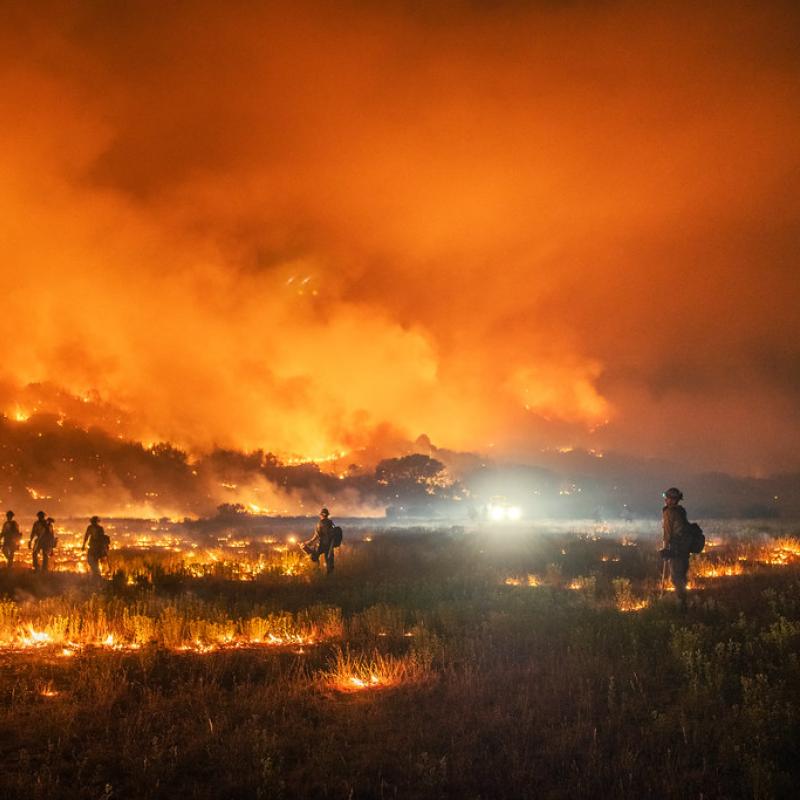
Night operations on the Pine Gulch Fire in Colorado (2020).
A key metric for understanding how the atmosphere dries fuels across the day/night cycle is the vapor pressure deficit, or VPD. VPD is an absolute measure of the difference between the air’s water vapor content and its saturation value - or the difference in how much moisture is currently in the air, and how much moisture that air can hold. A higher VPD indicates that there is less moisture in the air, and a lower VPD indicates that there is more moisture. VPD has been proven to be a useful climate variable in predicting fire spread (Sedano and Randerson, 2014), and it is a strong predictor of fuel moisture (Graff et al., 2020). When the VPD drops below a certain point, fires tend to slow down or extinguish themselves completely. When the VPD does not drop below that point, the vegetation remains flammable throughout the night.
Our study defined key aspects of the global night-time fire regime including the frequency of active fires, the fire radiative power (FRP; a proxy for fire intensity) and the seasonal peak in both frequency and FRP. Second, we quantified landcover-specific VPD thresholds (VPDt) for when fires were extinguished using satellite data for 81,809 fire events (2017–2020) in North America and South America. Finally, we quantified how night-time fire activity and the night-time fire season have changed over time.
Methods
In order to look at trends in night-time fires across recent decades, we utilized three main approaches. Firstly, we used data from the MODIS satellite (image below) to classify active fire events based on their solar elevation angle, which indicates at what time of day or night they occur.
Fire danger is most often assessed based on daytime conditions, capturing the atmospheric drivers that promote fire. Our approach focused on the nighttime VPD conditions that put fires out. In order to do this, we aligned data from Earth Lab’s FIRED algorithm, which delineates perimeters around MODIS burned area estimations, with GOES-16 active fire detections (a geostationary satellite data that detects fire every 15 minutes for most of the western hemisphere). This process of harmonizing the data allows us to model the 24-hour cycle of fire on a continental scale. We used this to create a statistical model that estimated the VPD threshold (VPDt) below which fires are very unlikely to burn for all burnable land cover types.
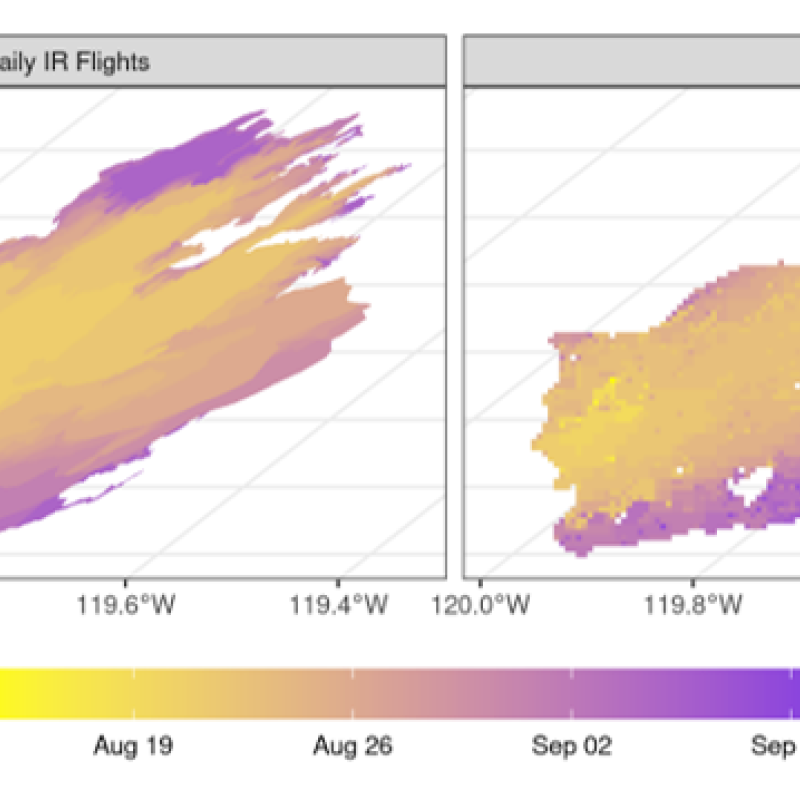
Figure 1: A comparison of hand-drawn maps from aircraft-based infrared images (left) and FIRED-delineated maps (right) of the 2013 California Rim Fire as it progressed from August to September of that year.
Once we had our VPD thresholds, we were able to explore trends in the climatological night-time fire season across a 42-year record (1979–2020) and in observed fire activity across an 18-year record (2003–2020) to determine how the climate of the night-time fire season has changed on an hourly and nightly basis globally (1979–2020). We were looking for instances when the minimum VPD was higher than the VPD threshold, which would indicate that fires are not being put out or reduced in size overnight. Similarly, an increase in the amount of hours that the minimum VPD exceeds the VPD threshold can be considered extra “flammable hours”.
Results & Implications
Substantial Night Fires Occur Globally
16.3% of the global burnable area had at least 25% of their detected fires at night from 2003-2020. The land cover type with the most night-time fires was temperate evergreen needleleaf forests (e.g. evergreen forests in Colorado mountains), with 38% of detected fires occurring at night. The peak fire season for night-time fires tended to occur after or simultaneously to the peak of the daytime fire season (measured by frequency of detected fires).
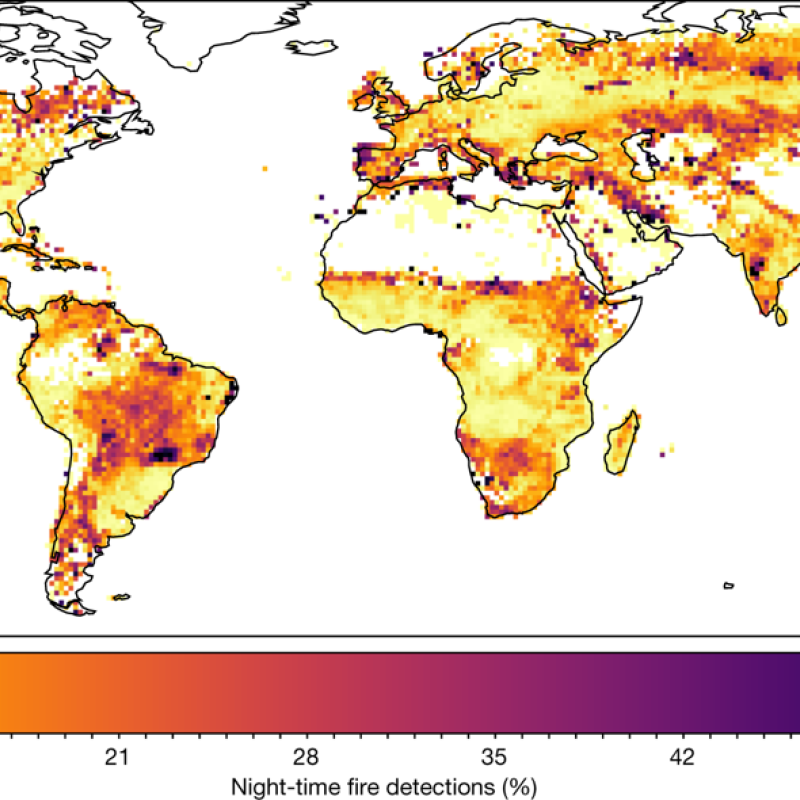
Figure 2: The map shows the percentage of 2003–2020 active fire detections (n = 80,190,449) that occurred at night. The scale is capped at 60%, because less than 1% of the mapped area had more than 60% of fire detections at night.
VPD conditions when fires extinguish
Across the burnable land cover types there was a similar, positive relationship: an increase in VPD increased the probability of fire detection. However, there was some variation among the land types - croplands, for instance, had the highest VPD thresholds. A higher VPDt essentially means fires are easier to extinguish because VPD goes down at night, and so it is easier to reach a higher threshold. Temperate forests generally had the lowest VPD thresholds, and therefore the VPD has to drop lower for fires to extinguish. From these thresholds, we define the climate-based night-time fire season as the number of nights within a year where VPDmin > VPDt, or the season in which the highest moisture conditions in the air still allow for fire to spread.
More flammable nights
Across the burnable area, 82% experienced an increased minimum VPD over the 42-year period, with a significant effect in 59% of the area. This indicates that even the most wet daily conditions in burnable areas are getting dryer. Similarly, over the 42 year period, there was an average yearly increase of 110 flammable night hours (36% increase) and 238 flammable day hours (27% increase). Certain areas experienced a greater increase in flammable night hours, as seen in Figure 3 below.
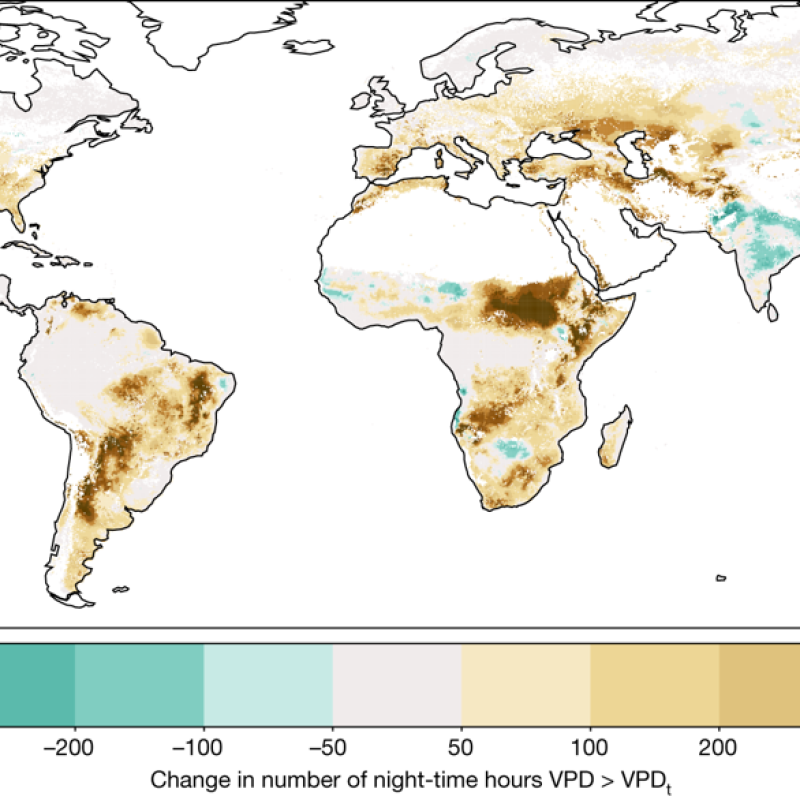
Figure 3: Forty-seven percent of burnable lands had significant (p < 0.05) positive trends in the number of night-time hours above the VPD threshold, according to a linear model. Inset: globally averaged area-weighted hours per year when VPD > VPDt during day (D, red) and night (N, blue; the scales are offset for day and night hours). The white areas indicate lands not classified as burnable.
Night-time fire intensity has increased
FRP is a proxy for fire intensity, providing a metric of radiative fire energy that integrates underlying fuel and climate conditions. Mean annual FRP per night-time detection significantly increased by 7.2% over the past 18 years. To our knowledge, this is the first global evidence of increased night-time fire activity in recent decades. The global burnable area that had an increase in flammable night hours (1979–2020) (Fig. 3) also showed a strong positive trend in fire intensity per fire, whereas areas that decreased in night-time flammable hours showed no detectable trend. The strength of these trends varied by region, as seen in Figure 4 below.
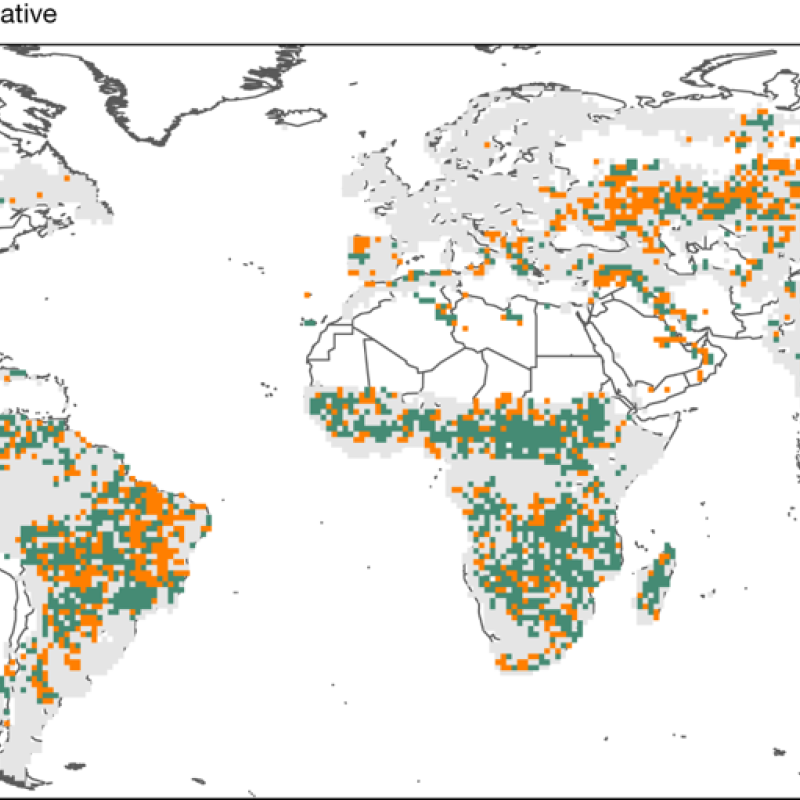
Figure 4: The map shows the trend in MODIS night-time mean fire radiative power for pixels with more than 180 MODIS active fire detections at night. The gray pixels are those defined as burnable but without a significant trend. Inset: the observed night-time global annual mean fire radiative power (MW per detection) and estimated trend in areas where night-time flammable hours increased from 1979 to 2020.
The “night brakes” on fire are failing
Although substantial public attention and scientific effort have focused on extreme fire behavior, this study highlights that it is equally important to investigate what puts fires out, particularly night-time weather conditions. The night-time cooling and recovery of moisture is a critical phenomenon that is threatened by warming nights. One more week per year of flammable nights, shown across nearly a fifth of burnable lands, represents a substantial loss in night-time relief for fire suppression efforts. With continued night-time warming, we expect to further lose the ‘night brakes’ on fire, resulting in a greater number of escaped wildfires that are more intense, longer-lasting and larger. It will be important to track night-time fire behavior across this coming decade and beyond.
Take-Home Points
- Night-time conditions, especially measures of moisture, are important for understanding how fires extinguish
- A significant portion of fires occur at night, with generally a similar peak season to daytime fires
- The amount of hours in which air dryness is high enough to allow for continued fires at night is increasing due to climate change
- Night-time fires are increasing in intensity
Funding for this work was provided by Earth Lab through CU Boulder’s Grand Challenge Initiative and the Cooperative Institute for Research in Environmental Sciences (CIRES) at CU Boulder. J.K.B. was supported, in part, by the National Science Foundation’s CAREER (grant number 1846384) and Macrosystems (grant number 2017889) programmes.
